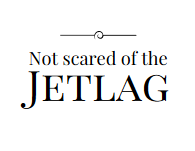Morocco is one of the most interesting and diverse countries in the world. There are many reasons to visit Morocco. Not only culture and people, but also the country’s nature and architecture invite you to make one or more trips.
Here I have compiled an overview of the 49 best sights in Morocco. In the text you will find links to more detailed articles about the respective cities. And you can find my general guide to Morocco here.
The best places to visit in Morocco in Marrakech and surroundings
Koutoubia Mosque in Marrakech
The Koutoubia Mosque was Marrakech‘s first Friday Mosque and gave the city its status as an independent city back in the 12th century. Today, it is still considered one of the largest mosques in the world, fitting about 25,000 people.
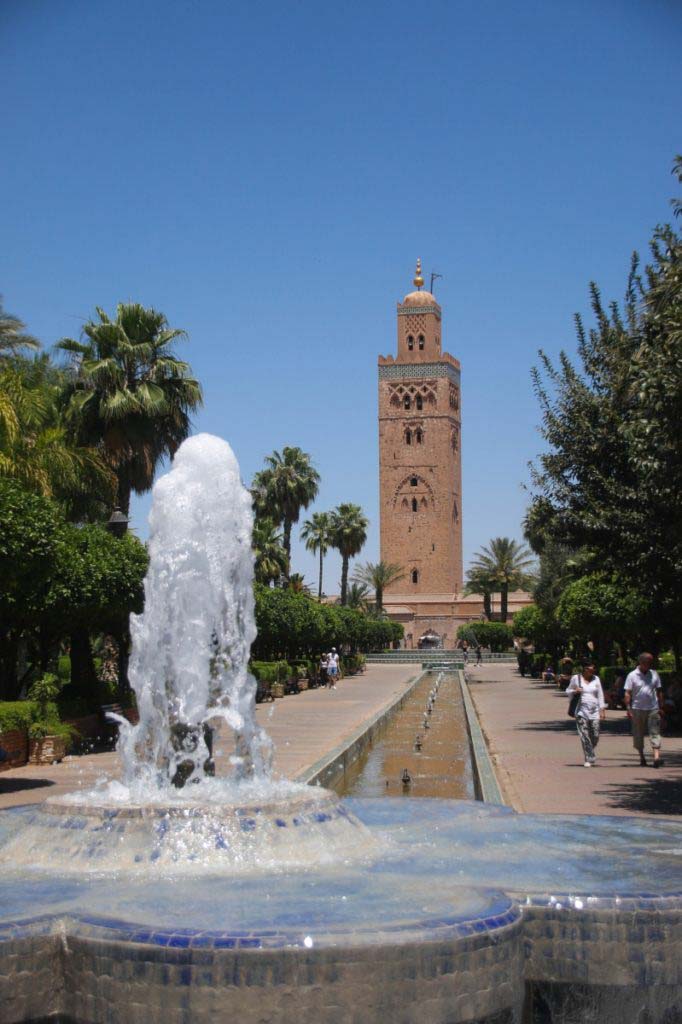
The minaret is 70 m high and visible from almost 30 km away, making it Marrakech’s most important landmark. It is not overly decorated so as not to distract from the general architecture of the building. Nevertheless, the style has been copied a few times, e.g. in the Hassan Tower in Rabat.
Like most mosques around the world, non-Muslims are not allowed to enter. So, you have to make do with the beautiful exterior and the surrounding park.
Jmaa el fna in Marrakech
One of the main attractions in Marrakech and most probably the most entertaining experience is an evening on Jemaa al fna, the city’s main square. I recommend enjoying the sunset from one of the rooftop terraces while sipping an orange juice or a traditional mint tea.
Later, you can walk around the square and watch the storytellers or listen to traditional music. The best storytellers (they are part of Morocco’s immaterial UNESCO world heritage) can be found by looking for the biggest crowd of people. And even if you don’t understand any of the local Berber languages, it’s really fascinating to watch. This is a great thing to do for free.
Madrasa ben Youssef in Marrakech
The madrasa was built in the Saadian period. The walls are elaborately decorated and covered with mosaics, stucco and wood carvings. The Medersa Ben Youssef was once the largest madrasa in North Africa and was in use from the mid-16th century until 1960. It is one of my favourite places in Marrakech!
Bahia Palace in Marrakech
The Bahia Palace is probably the most beautiful building in all of Morocco. If you’re a fan of mosaics, beautiful windows and ornate doors, this is a must-see. The palace was built in the 1890s and according to legend, was inhabited by the ruler of Marrakech, his family and dozens of concubines. You can visit the courtyards and many rooms. However, part of the building is occasionally used as accommodation for important guests and is not open to visitors.
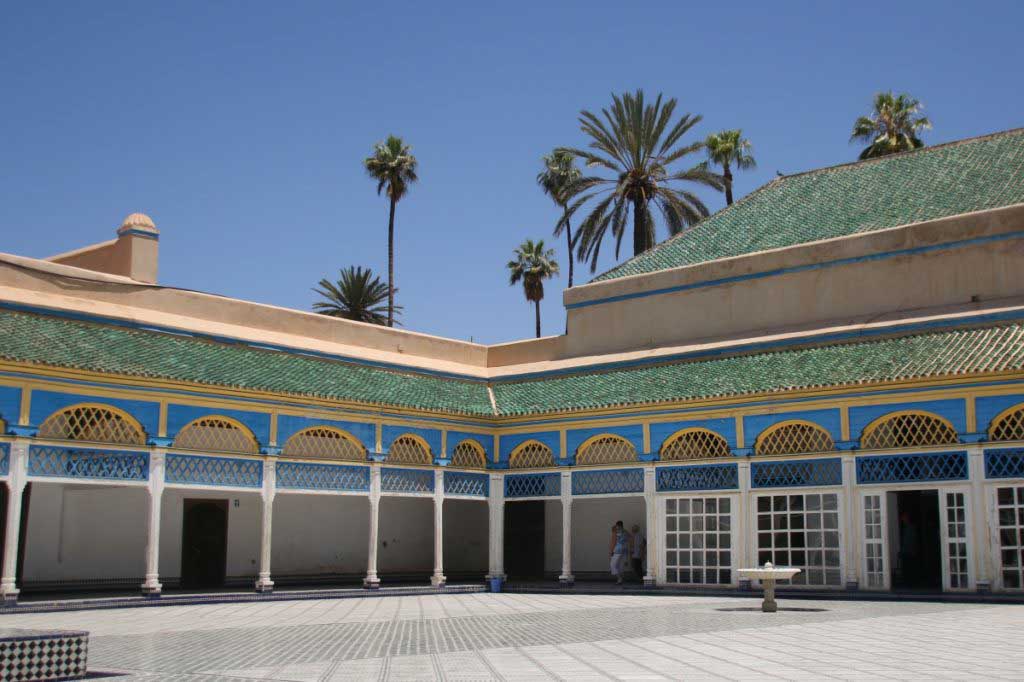
Le Jardin Secret in Marrakech
The Jardin Secret in the medina is the only garden you can easily walk to if you are staying within the medina. It’s a beautiful little garden in the courtyard of an old riad.
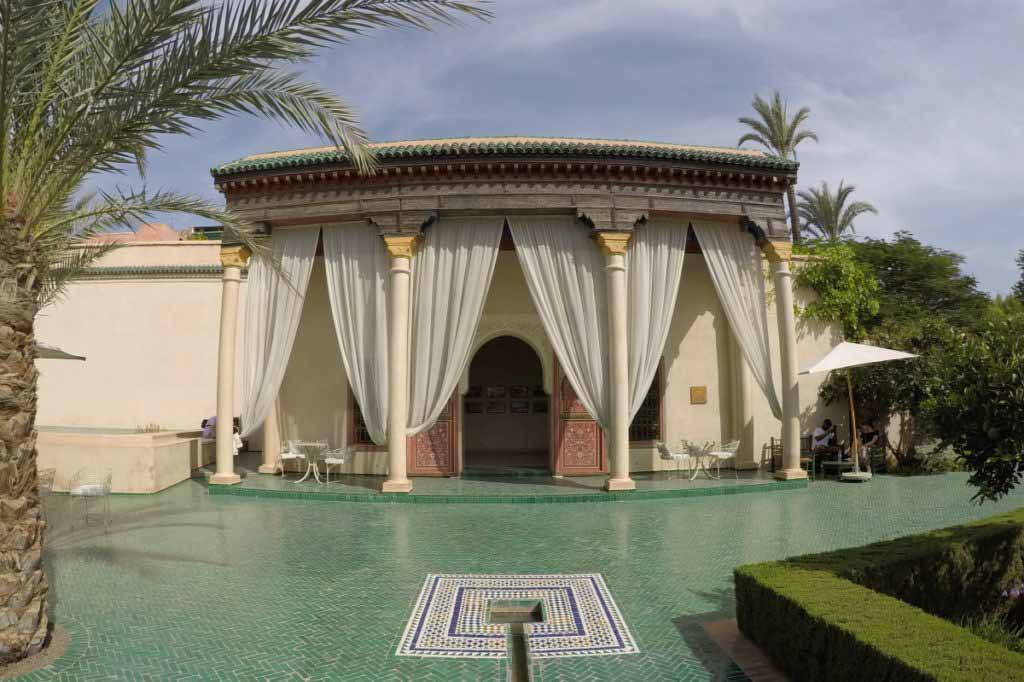
One part is a traditional Islamic garden with geometric design, the other a “chaotic” exotic garden with plants from all over the world. Another reason to visit is to learn about the unique way the garden is watered.
Jardin Majorelle in Marrakech
The Jardin Majorelle was created in the 1920s by the painter Jacques Majorelle. It is over 9000 square metres in size and is filled with an interesting mixture of exotic plants. In addition, there are several buildings painted in bright blue and yellow. Yves Saint Laurent and Pierre Bergé saved the garden from decay in the 1980s and added a café and a museum.
You prefer to let others do the planning? I offer itinerary planning for your trip to Morocco! You can check out the details here.
Ouzoud
One of the most popular destinations for a day trip from Marrakech are the Ouzoud waterfalls. They are idyllically situated in the Atlas Mountains and drop a total of 110 m over several steps. This makes them the highest waterfalls in Morocco, and they are also the ones with the most water.
You can find many small restaurants, some even with spectacular views of the waterfalls.

Once at the bottom, you can hop on one of the small boats for a close-up view of the falls and perhaps take a shower, and you can also go for a swim.
Imlil
Imlil is the starting point for most adventurers who want to climb the highest mountain in North Africa, Jebel Toubkal (4167 m). But even if you just want to do a bit of hiking, there are plenty of trails from Imlil. Besides, the village is beautifully situated, and the views are great.
There are many hiking trails that take you to smaller villages where you can have lunch or tea with a Berber family. If you don’t have a rental car, it’s probably best to book an organised tour from Marrakech including a hiking guide.
The best places to visit in Morocco on the Atlantic coast
Hassan II Mosque in Casablanca
This is the only active mosque open to non-Muslims in my current home country of Morocco. It is impressive in many ways as it is located on the coast, almost in the Atlantic Ocean.
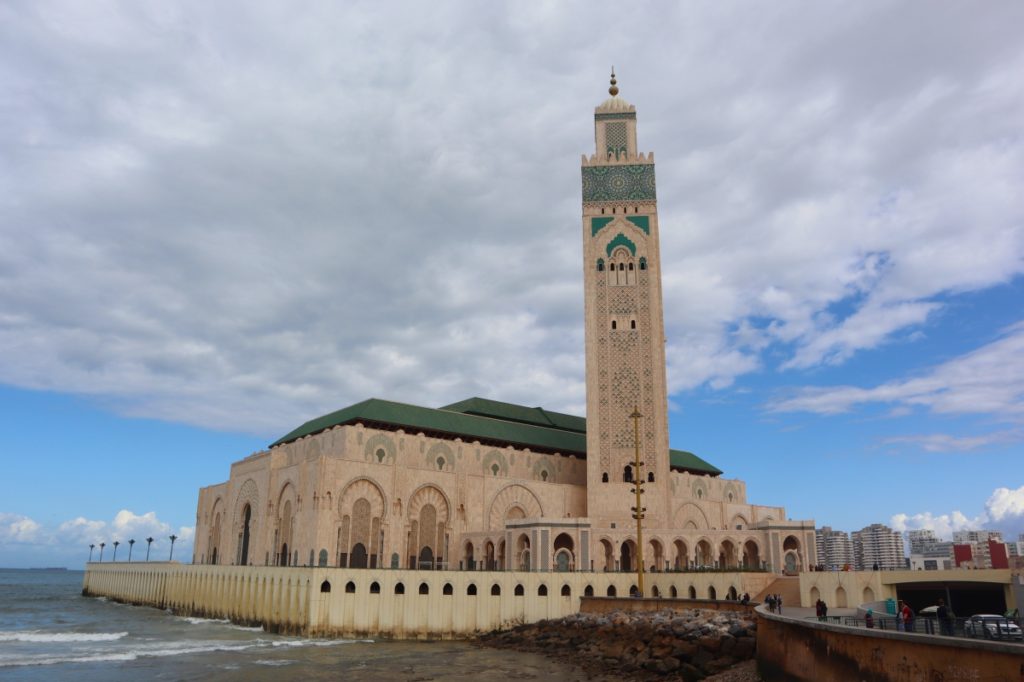
The beautifully decorated ceiling is attached to a movable roof so that, weather permitting, prayers are held under the blue sky. Contrary to many rumours (even in some guidebooks), there is no glass floor overlooking the ocean below.
The courtyard is surrounded by long arcades that provide some shade. There are 41 fountains in total, all decorated in the traditional Zellige style (mosaic). There are also several gates into the mosque, which are closed most of the time but are of impressive size.
Kasbah des Oudayas in Rabat
The Kasbah des Oudayas in Rabat is the oldest part of the city. It is basically a small, well-fortified residential area on the cliffs in the corner where the Bou Regreg River flows into the Atlantic Ocean. In the Kasbah, all the houses are painted blue and white. There are lots of great photo opportunities and several viewpoints over the river, sea and beach.
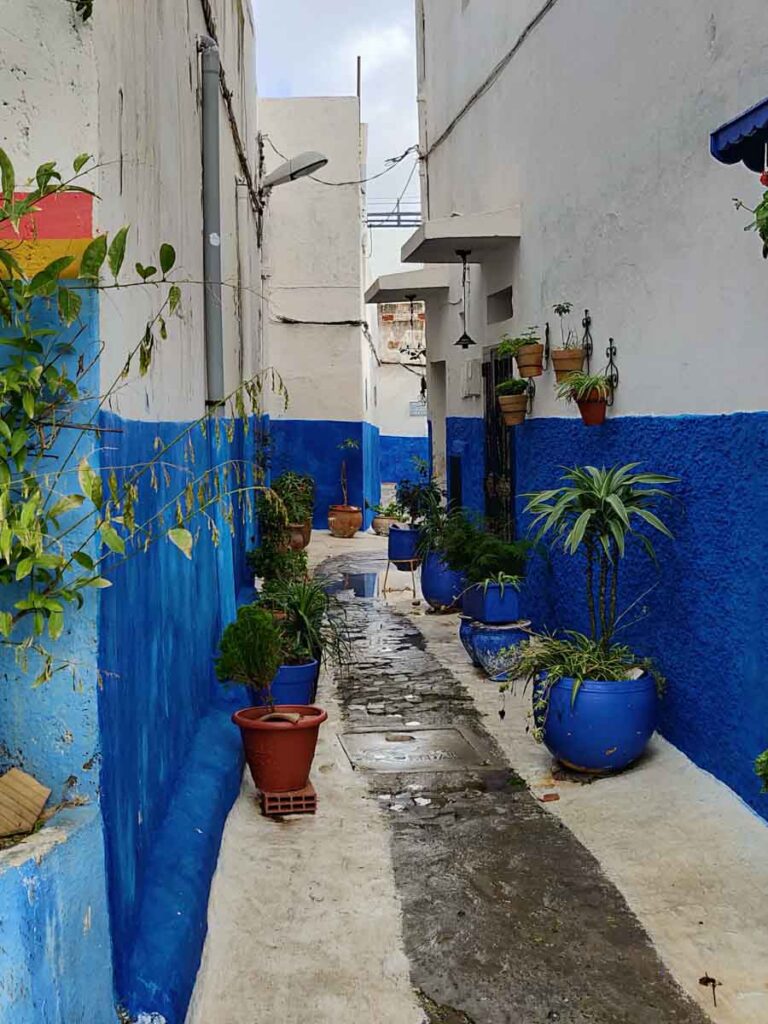
Rabat Medina
The medina in Rabat is very clearly laid out, as the streets and alleys are all perpendicular to each other. It’s a very relaxed place to look for souvenirs, just let yourself drift and find very tasty street food.
Hassan Tower in Rabat
If you are out sightseeing in Rabat, don’t miss out on the Hassan Tower. It was once supposed to be the minaret of the largest mosque in Morocco. Commissioned by Youssef al Mansour in 1192, construction stopped after his death. The plan was for the muezzin to ride up on horseback inside the tower to call out for prayers.

In the square in front of the mosque, you can see the pillar bases that would have supported the great hall of the mosque.
You can also find the mausoleum of Mohammed V and Hassan II here, part of which is open to tourists.
Skala de la Kasbah in Essaouira
The Skala de la Kasbah is the old fortification of the medina of Essaouira. Here you can climb the city wall and gaze at the sun setting over the Atlantic, the walls here are lined with many old cannons. In the immediate vicinity there are many small shops selling woodwork, ceramics and on one of the walls a local woman sells her very beautiful paintings with motifs of the city.

Skala du port in Essaouira
The Skala du port is another highlight in Essaouira. It basically forms the border between the medina and the port and offers great views of both. The entrance is to the right of the big gate on the medina side, and you have to pay 60 DH entrance fee.
Essaouira fish market and harbour
Below the Skala du port is the harbour with the fish market and a few small restaurants. Here the fishing boats arrive and you can watch the sardines being unloaded. The smaller boats bring other fish ashore, such as monkfish, dorado and the odd shark. You can look around at your leisure, take photos and choose the fish you want to eat for lunch or dinner. For a small extra charge, they are cleaned ready for the kitchen.

Paradise Valley
Paradise Valley is often offered as a day trip from Agadir. However, you can also drive there on your own with a rental car. The valley, which has water most of the year, reminds me of the wadis in Oman. You can go swimming, there are a few tea rooms and small restaurants that serve tagines.
Unfortunately, there was a lot of rubbish lying around when I was there. However, the government has organised a few clean-up campaigns now.
Ain el Hajar
An interesting day trip from Essaouira, about 45 minutes by car north, is Ain el Hajar, which translates to “source of stones”. Here millstones are hewn from the rock and sold to the surrounding villages, where grinding is still done by hand. If you walk around a bit, you can see why this place is good for this. The ground is made of stone slabs that are naturally the right size and sometimes even almost the right shape.

Tafedna Beach
If you are looking for a secluded and picturesque beach, you should take a trip to Tafedna. This small village is right by the sea and has a very nice beach that is practically empty during the week. When we were there, you could rent an umbrella for the day for 20 DH and there are some small shops and restaurants.
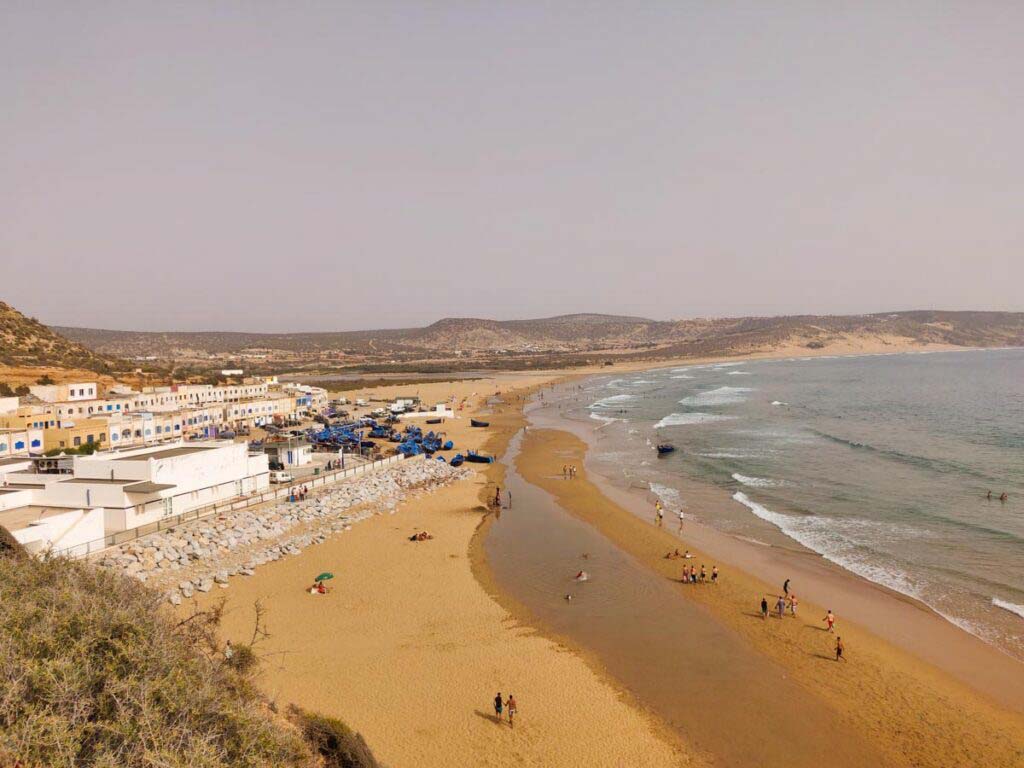
The beach is great for swimming and bathing, but there is no entertainment other than watching the small fishing boats bring in their catch in the afternoon. Also, there were no lifeguards, so you should be an experienced swimmer.
The best places to visit in Morocco in and around Fes
Medersa Bou Inania in Fes
The Medersa Bou Inania is a must-see when in Fes. It is one of the very few Islamic buildings in Morocco open to non-Muslim visitors and one of the largest and most important medersas in Morocco.
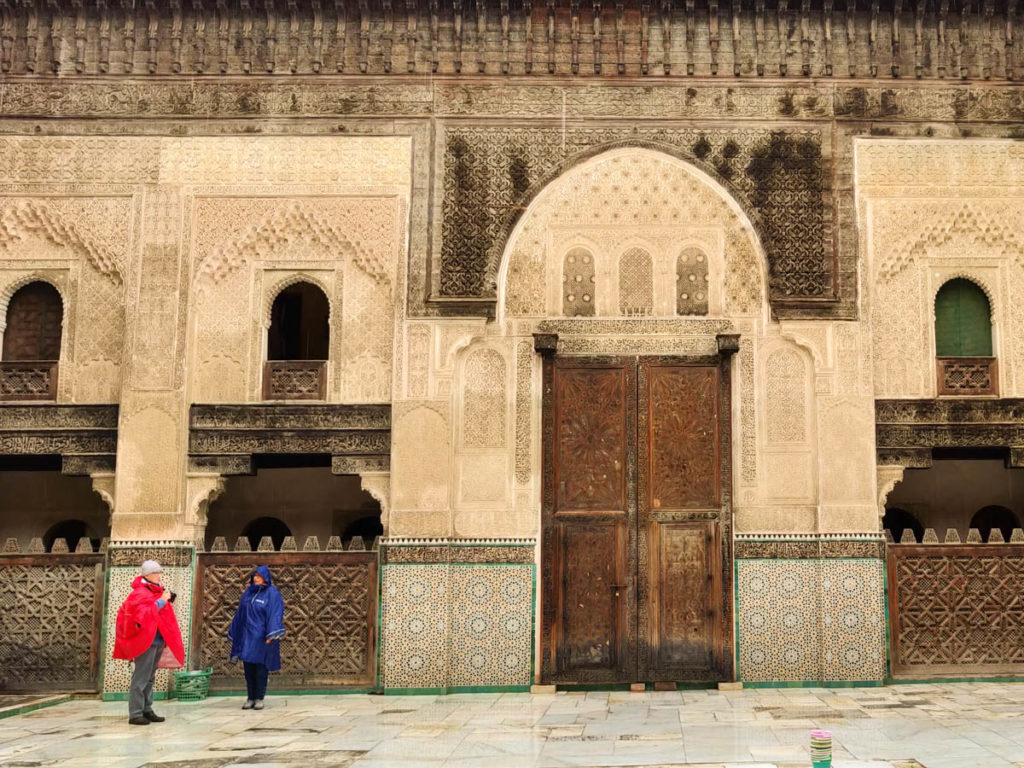
It dates from the 14th century and is built in a classical design: a central courtyard with a water fountain surrounded by prayer rooms and classrooms on the ground floor. On the upper floor, you find very small rooms where the pupils could sleep and study.
The walls surrounding the courtyard are spectacularly decorated with tiles, stucco and cedar wood carvings, as well as some calligraphy depicting verses from the Qur’an.
Foundouq al Najjarine in Fes
Another of my favourite places in Fes is the Foundouq al Najjarine. A foundouq used to be a “hotel” or caravanserai where traders could stay for a few days in the rooms upstairs while they did their trading on the ground floor. This one dates back to the early 18th century.

The Foundouk al Najjarine is in the middle of the woodworkers’ area, so it should come as no surprise that it now houses the Museum of Wood and Woodwork.
The traditional tanneries in Fes
One of the biggest attractions in Fes is visiting and photographing the tanneries. Especially the biggest one, the Chouara tannery, is probably the most photographed place in Fes these days. I’m sure everyone has seen the colourful photos of the tannery in Fes on Instagram.
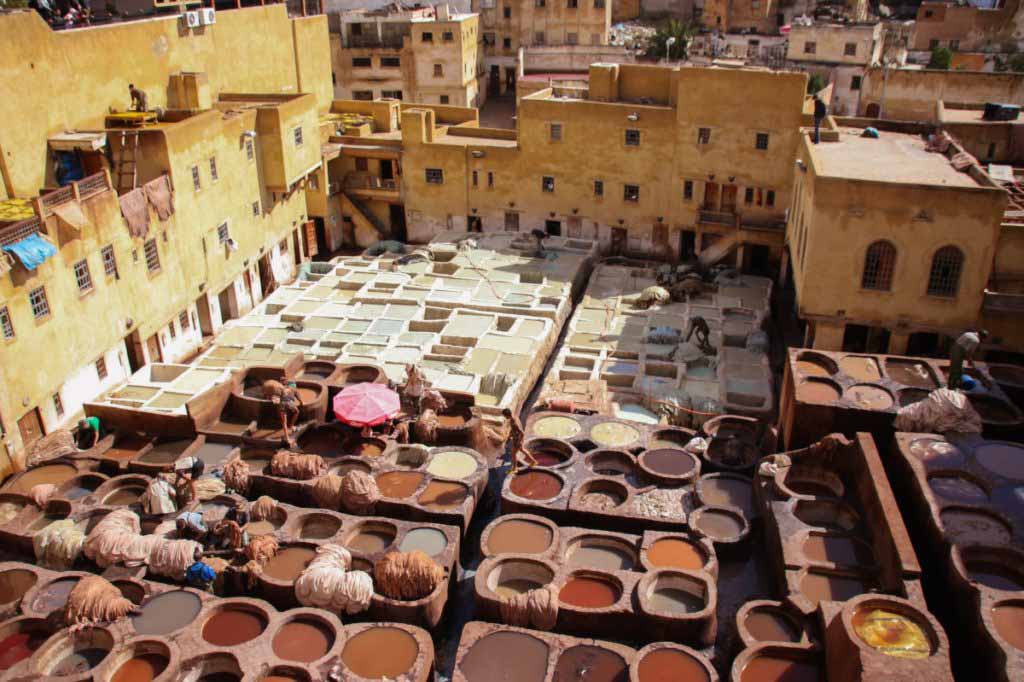
In Fes, leather is still tanned the same way it was hundreds of years ago, with pigeon droppings, quicklime and cattle urine (hence the smell!) as well as natural dyes. The men then tread on the leather in these huge cauldrons, softening it while exposing their own skin to these strong chemicals. While they earn a good salary, their life expectancy is rather short.
Medersa Bou Inania in Meknes
This beautiful Qur’an school in Meknes dates back to the 14th century and is definitely worth the 70 DH entrance fee. The medersa has the typical layout with a central courtyard surrounded by classrooms, while the upper area consists of small dormitories for the students.
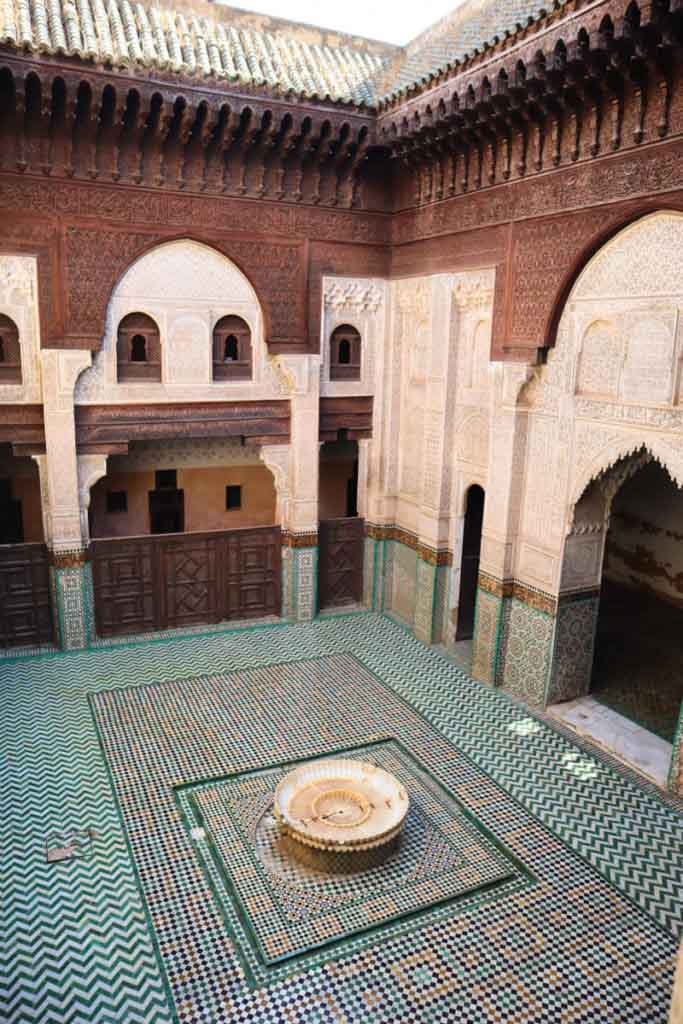
The design of the walls surrounding the courtyard can also be found in other schools and palaces. The lower part consists of colourful mosaics, the middle part of beautifully designed stucco and the upper part of carved cedar wood.
Hedi As Souani in Meknes
The most underrated sight in Meknes is Heri as Souani, the city’s former granary and horse stable. The granary is huge, and it is hard to imagine that it was filled to the brim with grain for the army of horses that Moulay Ismail owned. It is said that he had as many as 25,000 horses in the stables just behind the granary, back in the day when Meknes was an Imperial City.
And maybe it’s true, because the stables are huge. You can only visit part of them, though, because they were destroyed in an earthquake in 1755 and not everything is stable enough or restored.
Bab Mansour in Meknes
The Bab Mansour is considered the most beautiful city gate in all of Morocco. And after everything I’ve seen so far, I have to agree. Not only is it huge, it is also lavishly decorated and features several columns that Moulay Ismail “took” from Volubilis.
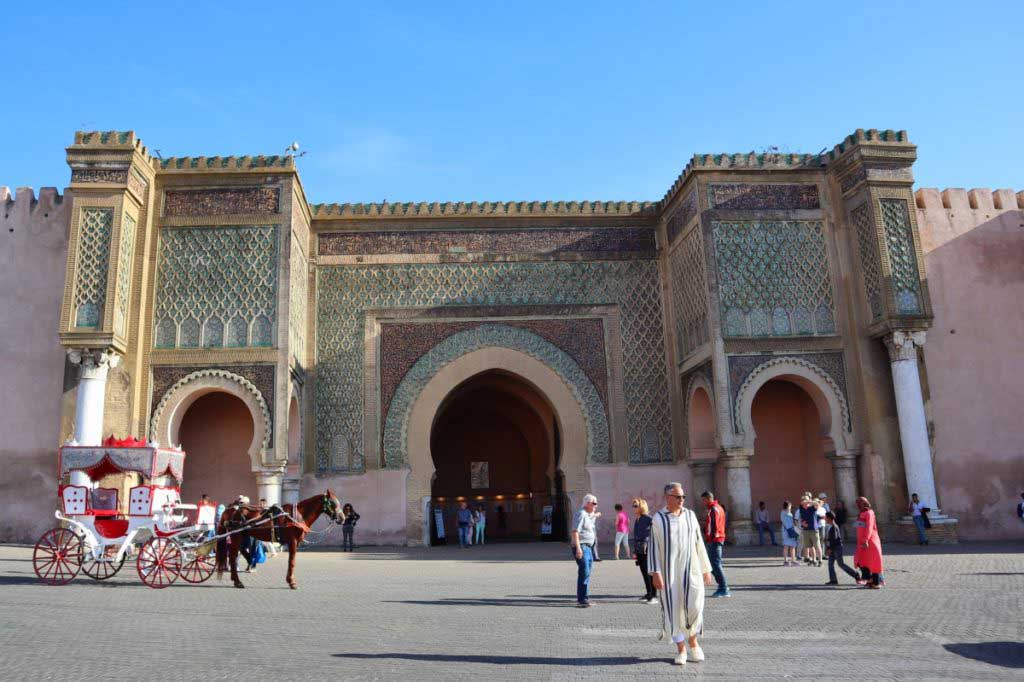
The Bab Mansour is best admired from Place el Hedim or one of the surrounding rooftop cafés in the late afternoon, when the sun is shining on it.
Volubilis
If you’re a fan of Roman ruins and mosaics, this is the place to be! Volubilis is thought to have been the capital of the former Empire of Mauritania before the Romans took over around 50 AD. The city grew to between 10,000 and 20,000 inhabitants, making it quite a substantial size.
Around 300 AD, Volubilis was abandoned by the Romans when the Berbers fought against the occupation. Later, the ruins were further destroyed by an earthquake. Gradually they took apart the Roman structures for building materials, and Moulay Ismail took a lot of marble for his new capital, Meknes.

Today you can find many interesting things in the ruins, and the place is on the UNESCO World Heritage List. There are many mosaics, bathhouses, oil mills and, of course, religious and pompous buildings like the Arc de Triomphe.
Sefrou
Sefrou is a really cute and colourful little town in the Middle Atlas, a great place for a day trip from Fes. It is said that Sefrou is actually older than Fes and was very prosperous due to its location on one of the major caravan routes. It was the last possible stopover before heading for the higher mountains on the way to the Tafilalet and from there across the Sahara.
There is a waterfall just outside that you can visit before heading into town for a walk around the medina and through the market. It’s a great place to get glimpses of Moroccan life as there is no tourist infrastructure. There are no hotels, no tourist restaurants, just your everyday life. Right at the city gate there is a small square where you can sit, drink the famous Moroccan mint tea and people-watch.

The medina is divided into two halves by a small river. The lower half of the medina consists mainly of the Mellah, the Jewish quarter. There was still a large Jewish population in Sefrou until the mid-1960s.
The best places to visit in Morocco in the north
Chefchaouen
The interesting part of Chefchaouen is the blue medina. It’s really hard to highlight individual “sights” as almost every corner is photogenic. So, you should just walk around, get lost and take as many photos as your heart desires. Since the medina is really small, you don’t have to worry about finding your way back.
Tangier Medina
Like any other Moroccan city, the medina of Tangier is worth a visit. The medina of Tangier is very colourful, you will find everything from yellow to pink to green on the lower part of the houses. Update 2024: after the last bout of restorations, the medina is now almost completely white.
It’s easy to get lost, but don’t worry, the medina isn’t big enough for that to actually be a problem. Just follow your nose and explore this area.

A very pretty street is the main road connecting the Grand Socco to the Grand Mosque of Tangier, Rue Siaghine. Halfway between the two, you can have a coffee at the Petit Socco.
St Andrew’s Church in Tangier
Just up the street from the Grand Socco you will find St Andrew’s Church. It’s a rather small church in a wonderfully overgrown churchyard that houses old graves of former, mostly English, residents of Tangier.
Inside you’ll find a really interesting mix of Anglican and Moroccan architecture and design elements.
Tomb of Ibn Battuta in Tangier
Have you ever heard of Ibn Battuta? He was “the Marco Polo” of the Islamic world. He was born in Tangier at the beginning of the 14th century and during the course of his life travelled as far as China and back, as well as through parts of East and West Africa. His accounts were written down by a famous writer of the time, but somehow got lost for a few centuries. Today he is a famous figure in the Islamic world and his tomb is here in Tangier.

It’s a bit hidden in the western part of the medina and rather nondescript. But I think it’s a great place to pay respect to one of the greatest travellers of all time.
Hercules Grotto
The Cave of Hercules, or Hercules Grotto, is perhaps the best known of Tangier’s attractions, but is actually located a few kilometres west of the city. Nowadays it is easy to visit as the path down into the cave is paved, making it safe to explore in all kind of weather.
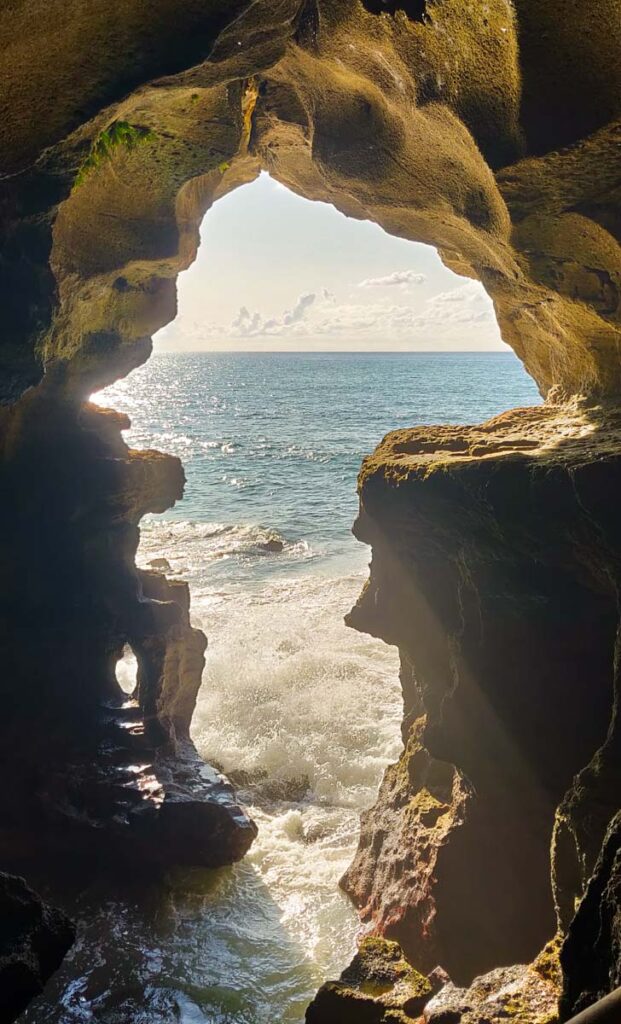
The entrance to the cave facing the sea looks like a mirrored outline of Africa and is a very popular photo motif.
Cap Spartel
Another place to visit along the northern Atlantic coast is Cap Spartel. It is the point where the Atlantic meets the Mediterranean, although looking at the map, I disagree with this location.
Assilah
Assilah is a very cute and cosy little town on the Atlantic. Every year there is a festival here where artists paint interesting pictures on the walls of the houses in the medina. This means you actually have to come back every year to see the new artworks.
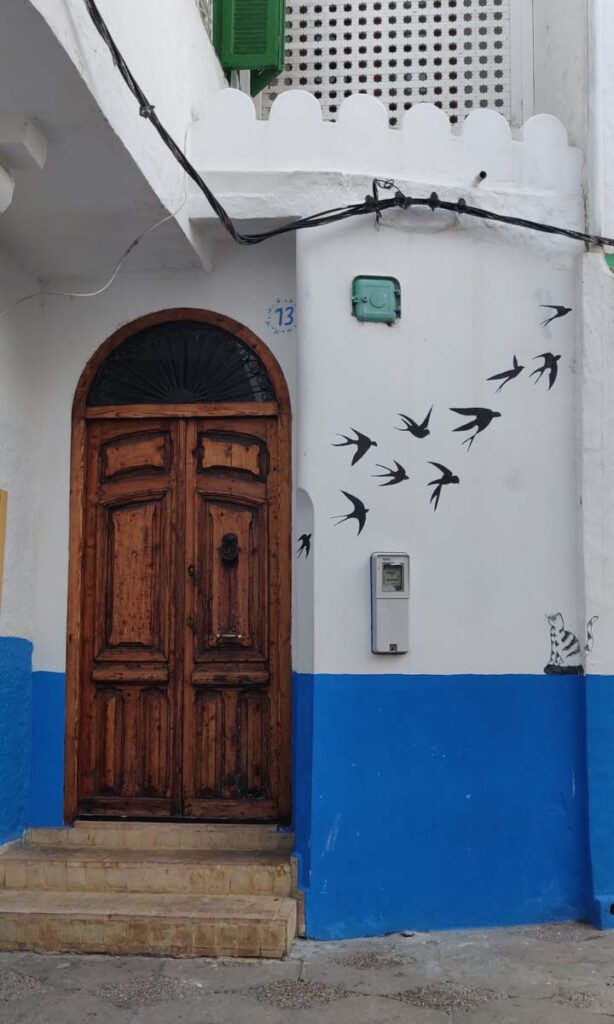
The medina is very small, mainly white and blue, and there are relatively few tourists here. Nevertheless, or perhaps because of this, it is worth a visit.
Tetouan
Tetouan is located in the far north of Morocco, near the Mediterranean Sea. Tetouan’s medina is one of the smallest in Morocco, but one of the best preserved. It has whitewashed walls and is built on the side of a hill, making it very photogenic.
The entire medina is still surrounded by a large wall and you can only enter it through one of the seven city gates. Parts of the medina are covered with green wooden roofs, which provide the necessary shade in summer.
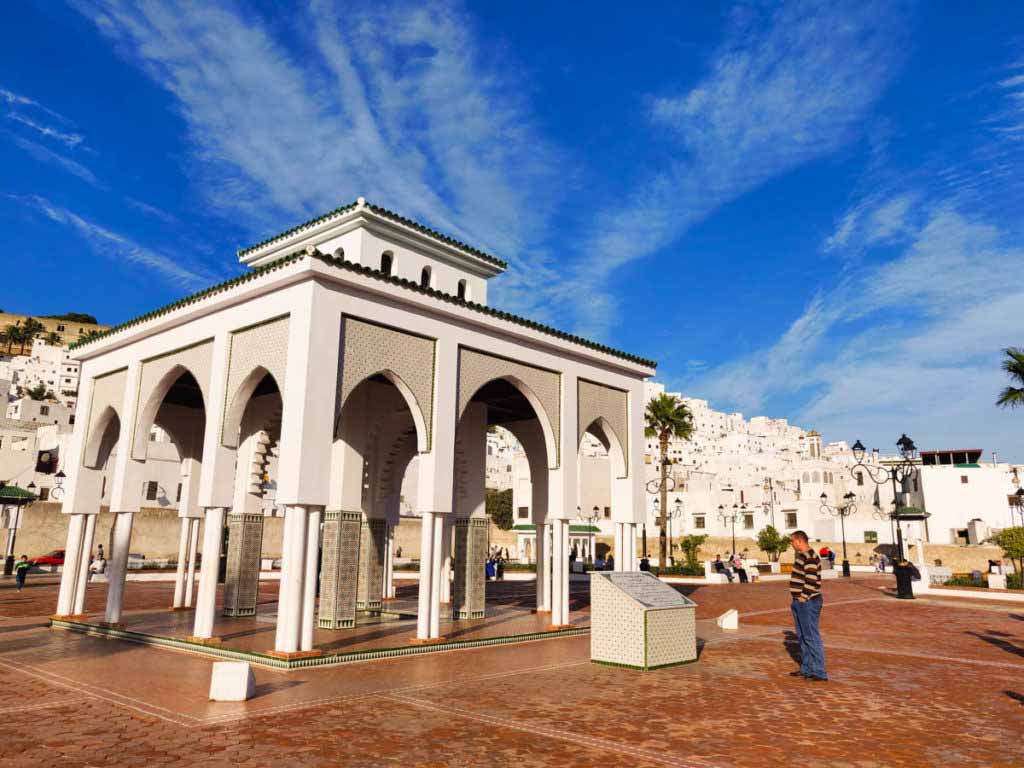
The medina borders the Spanish Quarter, which is also white, but much newer and with the typical Spanish balconies. It is this contrast that makes Tetouan one of my favourite cities in Morocco.
The best places to visit in Morocco in the south
Taroudannt
Taroudannt is often, and not unjustly, called Little Marrakesh. The town is much smaller and surrounded by a very impressive, intact city wall. But if you walk around here, you can imagine very well what Marrakech must have been like before the big tourist crowds.
A visit to the souks is most worthwhile; you won’t be bothered here and can look for a few authentic souvenirs in peace and quiet. There is also a small and authentic tannery in Taroudannt where you can buy leather products directly from the artisans.
Legzira Beach
Legzira was famous for its Elephant Rock, an arch made of the red rock typical for the region. Unfortunately, it collapsed a few years ago. But there are many more rock arches at the beach, they are just not as impressive.

The small town has a few hotels and appartments overlooking the Atlantic.
Tiznit
Tiznit is also surrounded by a completely preserved city wall. However, the town as a whole is rather young, having been founded around 1880. There is not much to see, but the medina has a relaxed charm and Tiznit is famous for its silver workmanship. So, if you are looking for a unique piece of jewellery, this is the place to go.
Tamegroute
Tamegroute is famous for its pottery. The tiles made here are used for the roofs of mosques and other holy cities. But there are also many household items made from the typical dark green clay, that are popular souvenirs.

M’Hamid/Erg Chigaga
M’Hamid is the second gateway to the Sahara dunes after Merzouga. However, it is comparatively sleepy, there are a few auberges and small restaurants, but otherwise it is very quiet. Except when the Festival International des Nomades takes place in March. Then it’s overcrowded and loud for a few days.
If you want to visit the big sand dunes, you should definitely book a tour to Erg Chigaga, the dunes closer by are not as impressive.
here you can learn more about the different parts of the desert in Morocco.
Draa Valley near Zagora
The Draa Valley is largely dry from Zagora southwards, but between Ouarzazate and Zagora you can admire the millions of date palms that grow here. It is an impressive sight in the surrounding desert.
Ait Ben Haddou
Ait Ben Haddou was founded about 1000 years ago and used to be quite a wealthy town, as it was the first stop for all travellers and traders coming from the north through the Atlas Mountains. So, because of the wealth, there was quite a need for fortifications, and you can still see this on almost every building.

Since the great caravans became a thing of the past, the city lost its importance. But people quickly realised that life was easy in this area and Ait Ben Haddou remained inhabited until recently. It was added to the UNECSO World Heritage Sites list in 1987, and while increased tourism brought money, it also led to people moving to the ‘modern’ part of the town on the other side of the river.
Ouarzazate
Ouarzazate is rather uninteresting as a town. But it is home to the largest film studios in the world. And these make the place perfect for a stopover on the way south, be it to Zagora or Merzouga.
Also worth a visit is the Kasbah Taouirt on the outskirts of the city.
Dades Gorge
The Dades Gorge has become famous, especially on Instagram. At one point in the gorge, the road winds up the mountain in narrow serpentines and from the top you have a wonderful view of the trucks moving up at a snail’s pace. The rest of the valley is actually much more beautiful with its many villages on the slopes and the green gardens along the river.

Todra Gorge
The Todra (or Todgha) Gorge is also most beautiful away from the tourist corner. This is a very narrow part of the gorge, where unfortunately stalls and pushy guides spoil the picture.
But you can go climbing and/or abseiling here. And if you simply drive a little further, you will also come to very beautiful sections of the valley where you are largely alone.
Valley of the Roses
The Valley of the Roses lies behind Kelaat M’Gouna and is, in my opinion, the most beautiful of the valleys here. You can stay overnight in the village of Bou Thrarar and go for a hike or two from here.
Fossil Museum Erfoud
On the way south, shortly after Erfoud, there is a nice and informative fossil museum. You can’t miss it because there are some huge dinosaur skeletons in front of the building. In the museum you can find lots of fossils from the area, as the region used to be a coral reef many millions of years ago.

Rissani
On the way to Merzouga, you will inevitably pass through Rissani. Sunday is the big market day there and the town is full of people coming from the surrounding villages, riding donkeys or driving horse carts. You can buy everything there, from fruit and vegetables to donkeys and sheep. It is really fun to watch the colourful hustle and bustle.
Merzouga/Erg Chebbi
One of the most popular destinations in Morocco are the famous dunes of Merzouga. Many people dream of a camel ride in the dunes and a night in a desert camp. You can find all this and more in Merzouga.

Petroglyphs Taouz
If you’re a bit of an archaeology nerd like me, you’ll love the petroglyphs of Taouz. There are images of gazelles, snakes and other animals that were native to the region before the Sahara spread here.
There are apparently several places in the surrounding mountains where you can find petroglyphs, but there is one small area with a car park nearby, but it is only accessible by off-road vehicles.
Is my blog helping you?
Maybe you want to thank me by inviting me for a coffee!
You prefer to let others do the planning? I offer itinerary planning for your trip to Morocco! You can check out the details here.
Please note that some of the links above are affiliate links and, at no additional cost to you, I earn a small commission if you make a purchase. That income goes to supporting this website and keeping it free for you and everyone else!
